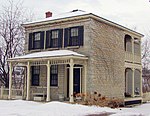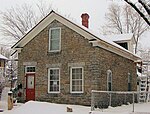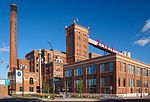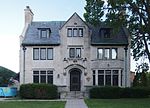North High Bridge Park
Parks in Saint Paul, MinnesotaProtected areas on the Mississippi RiverRegional parks in MinnesotaSculpture gardens, trails and parks in the United States

North High Bridge Park is a 0.85-acre (0.34 ha) city park located on the east bank bluffs above the Mississippi River in Saint Paul, Minnesota, United States. The park is adjacent to the High Bridge and was created when the new High Bridge was finished in 1987. The park includes gardens, sculptures and an overlook of the Mississippi River.
Excerpt from the Wikipedia article North High Bridge Park (License: CC BY-SA 3.0, Authors, Images).North High Bridge Park
West Goodrich Avenue, Saint Paul West Seventh - Fort Road
Geographical coordinates (GPS) Address Nearby Places Show on map
Geographical coordinates (GPS)
| Latitude | Longitude |
|---|---|
| N 44.937222222222 ° | E -93.108611111111 ° |
Address
Little Sisters of the Poor
West Goodrich Avenue
55102 Saint Paul, West Seventh - Fort Road
Minnesota, United States
Open on Google Maps










